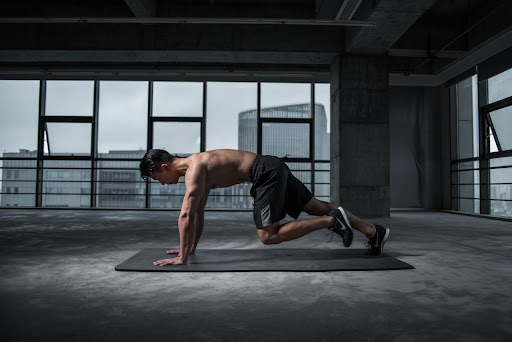C155C Chronicles
Exploring the latest trends and insights.
HIIT and Run: Fitness You Can’t Fake
Unleash your potential with HIIT and running! Discover workouts that truly transform your fitness journey—no faking it here!
The Ultimate Guide to HIIT: Transform Your Running Routine
High-Intensity Interval Training (HIIT) has taken the fitness world by storm, especially for runners looking to enhance their performance and transform their routines. Integrating HIIT into your running regimen can lead to improved speed, endurance, and overall cardiovascular health. The principle behind HIIT is simple: alternate short bursts of intense activity with periods of rest or lower-intensity exercise. For example, you might sprint for 30 seconds followed by 60 seconds of jogging or walking. This method not only burns more calories in a shorter time but also promotes the development of lean muscle mass, which is crucial for runners seeking to minimize weight while maximizing power.
To effectively incorporate HIIT into your running schedule, consider following a structured plan. Here’s a sample HIIT running workout to get you started:
- Warm-up: 5-10 minutes of light jogging
- Workout: Repeat the following cycle 4-6 times
- Sprint at max effort for 30 seconds
- Recover with 60 seconds of walking/jogging
- Cool down: 5-10 minutes of light jogging or walking
By consistently implementing HIIT in your training, you’ll not only break through training plateaus but also make your running routine more engaging and effective. Remember to listen to your body and allow for adequate recovery, as the intensity of HIIT can be taxing on your muscles and joints.

HIIT vs. Steady-State Cardio: Which Is Best for Your Fitness Goals?
When it comes to choosing between HIIT (High-Intensity Interval Training) and steady-state cardio, it's important to understand your specific fitness goals. HIIT involves short bursts of intense exercise followed by periods of rest or lower-intensity activity. This method is highly effective for burning fat in a shorter amount of time, making it ideal for individuals looking to enhance their metabolic rate and lose weight quickly. On the other hand, steady-state cardio consists of maintaining a consistent, moderate level of intensity over a longer duration. This approach can be beneficial for building endurance and is often preferred by athletes training for long-distance events.
Ultimately, the choice between HIIT and steady-state cardio should depend on your fitness level and personal preferences. If you're short on time and looking for significant fat loss, HIIT may be the best fit. However, if you enjoy longer workouts and seek to improve overall cardiovascular health without the intensity, then steady-state cardio might be the way to go. It's also worth noting that combining both methods in your workout routine can provide a well-rounded approach to fitness, ensuring you reap the benefits of both high-intensity efforts and sustained endurance training.
5 Common Myths About HIIT and Running Debunked
High-Intensity Interval Training (HIIT) and running are two popular workout methods, but they are often surrounded by myths that can mislead beginners and fitness enthusiasts alike. One common myth is that HIIT is only effective for fat loss. While it is true that HIIT is excellent for burning calories in a short amount of time, it also improves cardiovascular health, builds endurance, and increases metabolic rate long after the workout. This makes it a versatile training option for anyone looking to enhance their overall fitness, not just shed pounds.
Another prevalent misconception is that running is the best way to boost endurance and speed. Many believe that solely focusing on running will provide all the necessary benefits, but this is not the case. Incorporating HIIT workouts into a running regimen can significantly improve performance by enhancing aerobic and anaerobic capacity. The combination allows runners to build strength and speed more effectively, proving that the variety in training is crucial for achieving peak performance.